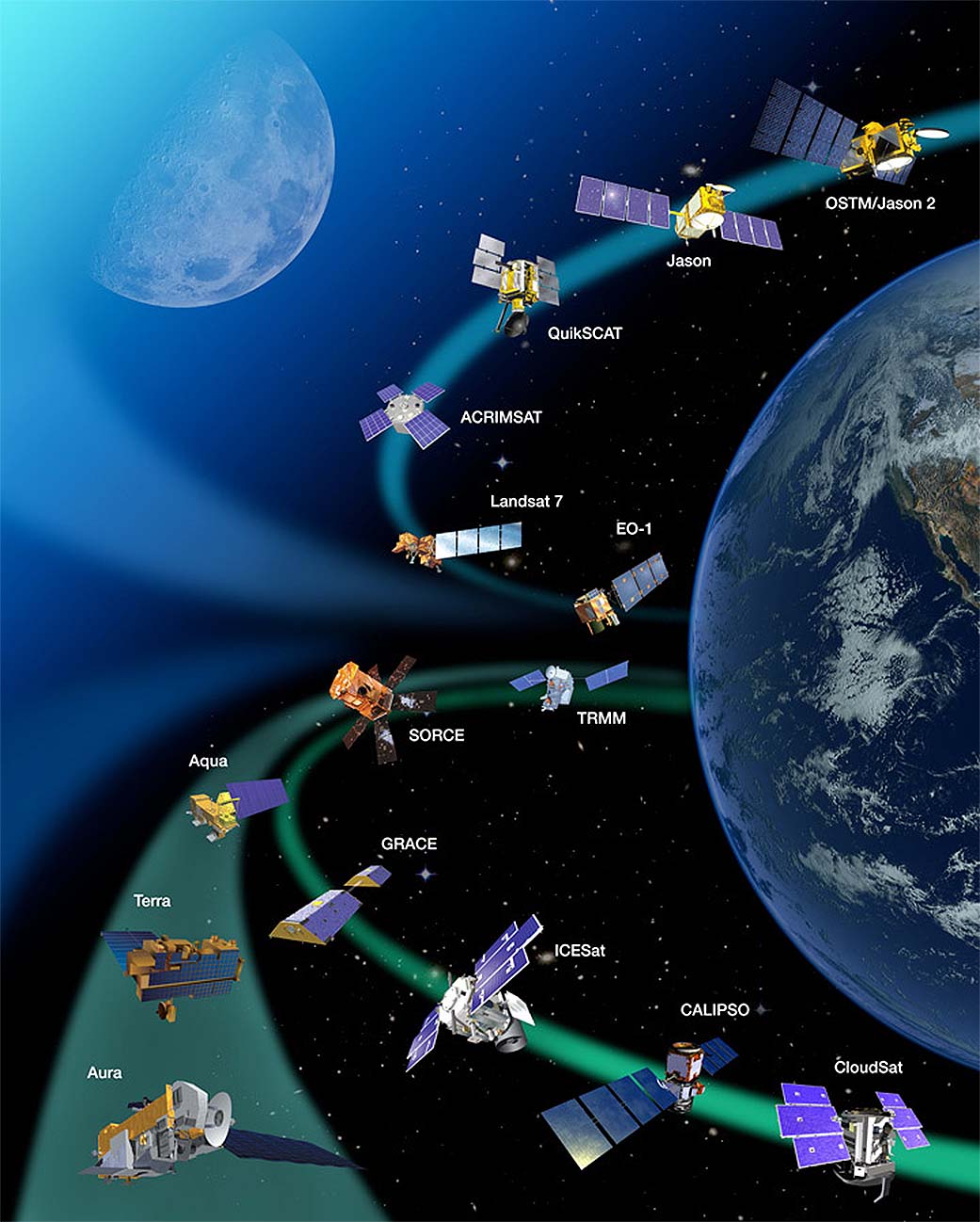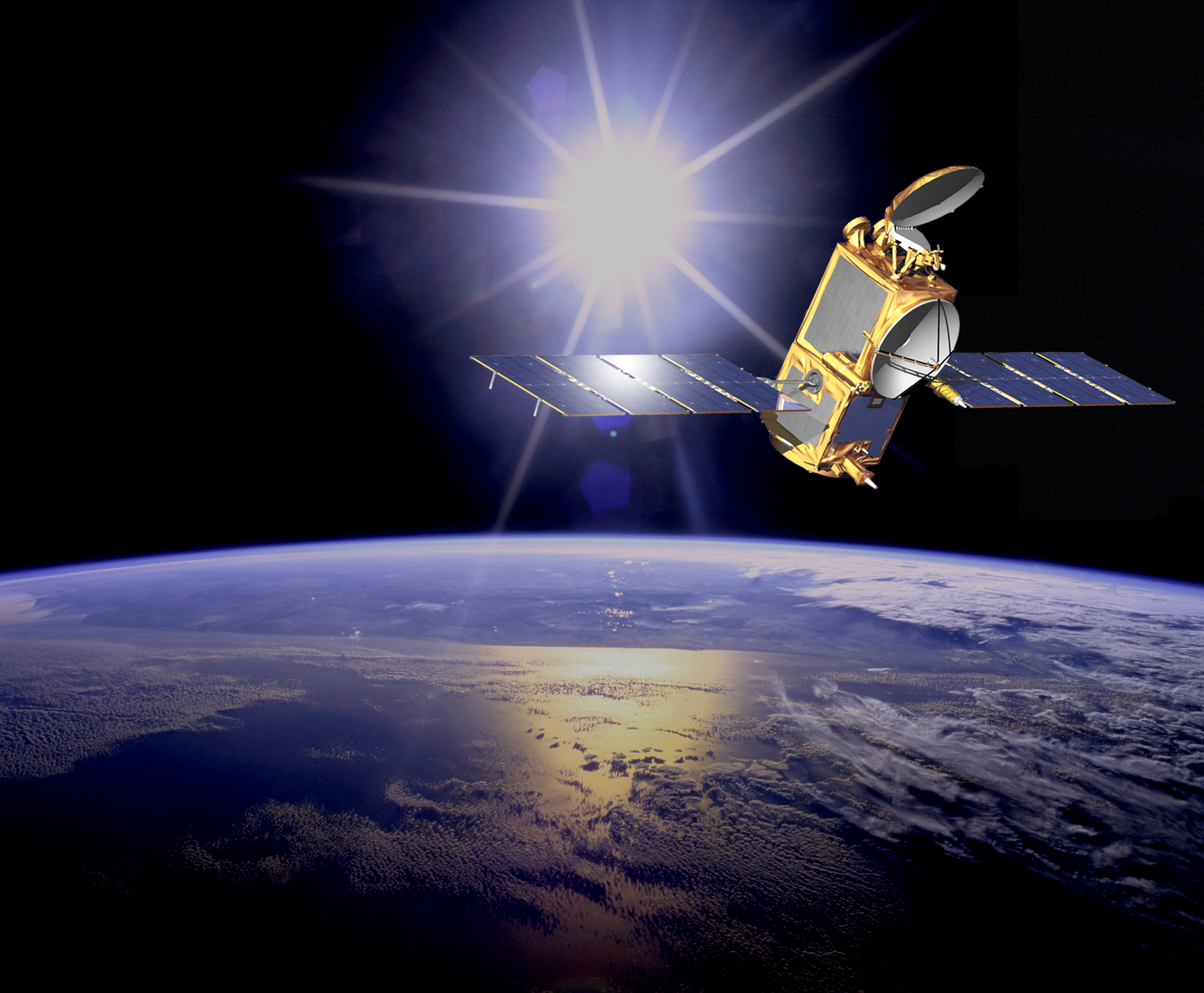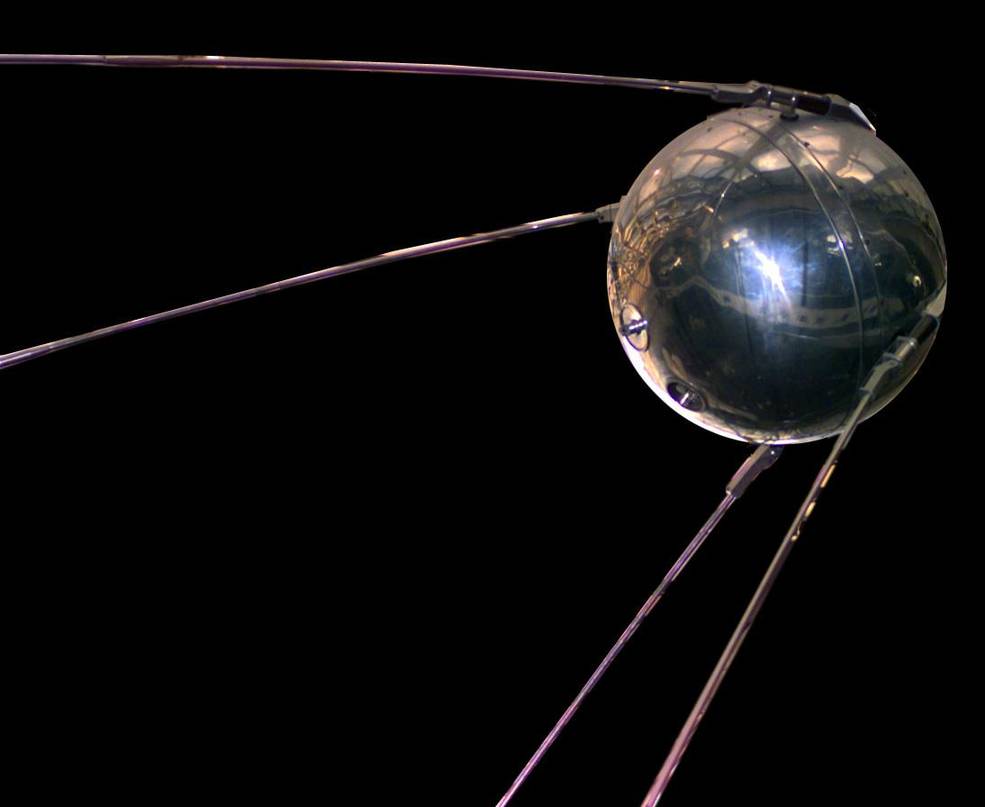This article is for students grades K-4.
A satellite is an object that moves around a larger object. Earth is a satellite because it moves around the sun. The moon is a satellite because it moves around Earth. Earth and the moon are called “natural” satellites.
But usually when someone says “satellite,” they are talking about a “man-made” satellite. Man-made satellites are machines made by people. These machines are launched into space and orbit Earth or another body in space.
There are thousands of man-made satellites. Some take pictures of our planet. Some take pictures of other planets, the sun and other objects. These pictures help scientists learn about Earth, the solar system and the universe. Other satellites send TV signals and phone calls around the world.

Why Are Satellites Important?
Satellites fly high in the sky, so they can see large areas of Earth at one time. Satellites also have a clear view of space. That’s because they fly above Earth’s clouds and air.
Before satellites, TV signals didn’t go very far. TV signals only travel in straight lines. So they would go off into space instead of following Earth’s curve. Sometimes they would be blocked by mountains or tall buildings.
Phone calls to faraway places were also a problem. It costs a lot and it is hard to set up telephone wires over long distances or underwater.
With satellites, TV signals and phone calls can be sent up to a satellite. The satellite can then send them back down to different spots on Earth.

What Are the Parts of a Satellite?
Satellites come in many shapes and sizes. But most have at least two parts in common – an antenna and a power source. The antenna is used to send and receive information. The power source can be a solar panel or battery. Solar panels make power by turning sunlight into electricity.
What Were the First Satellites in Space?
The Soviet Union was the first to launch a satellite into space. The satellite was launched in 1957 and was called Sputnik 1.
Many NASA satellites carry cameras and scientific sensors. They may gather information about Earth’s land, air and water. Or they may collect data from the solar system and universe.
NASA has launched many satellites into space. The first was Explorer 1 in 1958. Explorer was America’s first man-made satellite. The first satellite picture of Earth came from NASA’s Explorer 6 in 1959.

How Does NASA Use Satellites?
NASA satellites help scientists study all kinds of things.
Satellites provide information about Earth’s clouds, oceans, land and air. They also can observe wildfires, volcanoes and smoke. All this information helps scientists predict weather and climate. It helps farmers know what crops to plant. It helps control the spread of disease. And it helps with response to emergencies.
Satellites also tell us a lot about space. Some watch for dangerous rays coming from the sun. Some explore stars, planets, asteroids and comets.

























